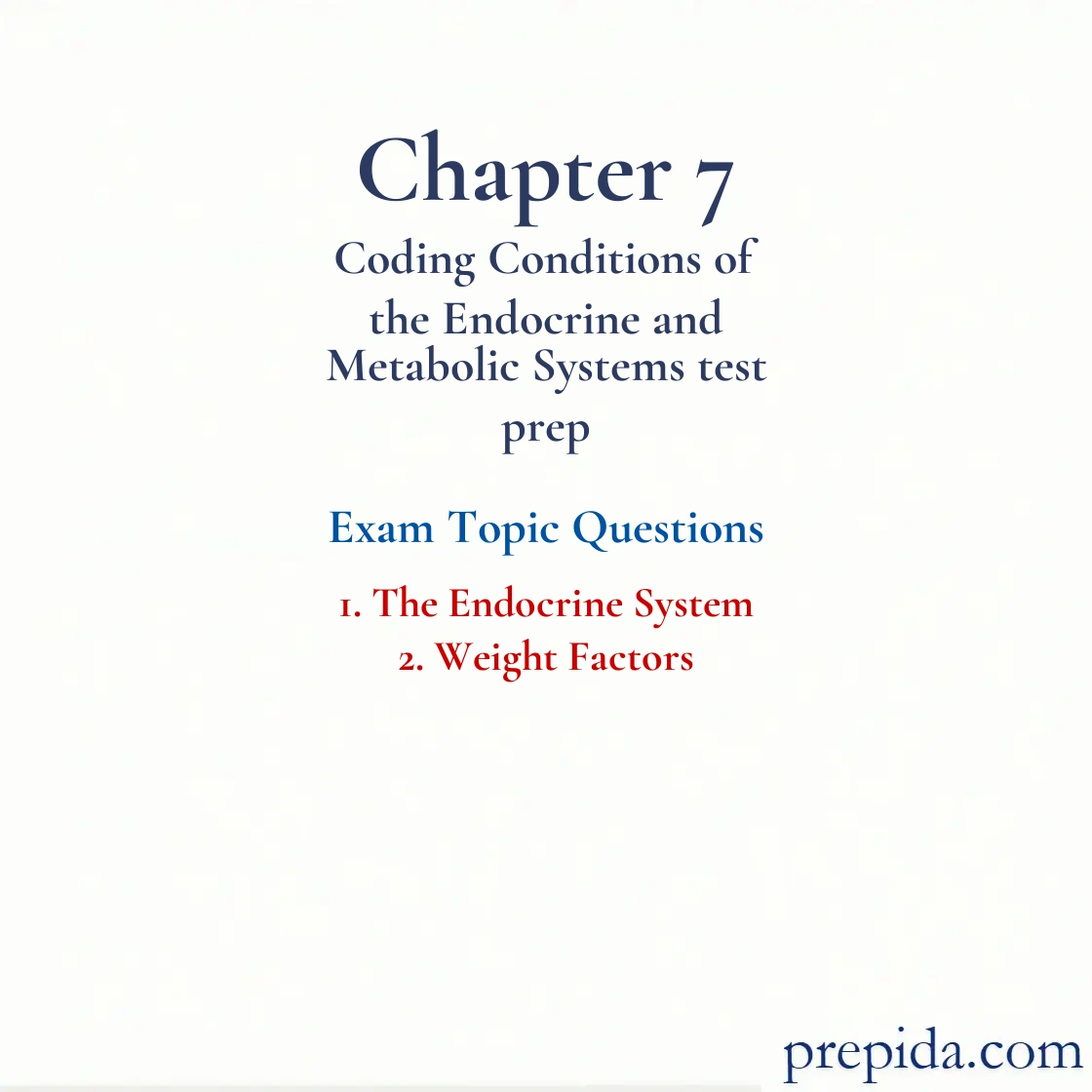
Which hormone is released during labor and delivery to help contract the uterus?
- Oxytocin
- Prolactin
- Thyroid-stimulating hormone
- Vasopressin
Oxytocin is the hormone released during labor and delivery to help contract the uterus.
Obstetrics: A health care specialty focusing on the care of women during pregnancy and the puerperium.
How many different hormones does the hypothalamus create?
- 6
- 8
- 10
- 12
The hypothalamus creates eight different hormones.
How many lobes are in the pituitary gland?
- 1
- 2
- 3
- 4
There are two lobes in the pituitary gland.
The larger lobe in the pituitary gland is known as the:
- adenohypophysis.
- corticotropin.
- neurohypophysis.
- somatotropin.
The adenohypophysis is the larger lobe, sitting anteriorly in the pituitary gland.
The hypothalamus is located within the _____ ventricle of the brain.
- second
- third
- fourth
- fifth
The hypothalamus is located within the third ventricle of the brain.
Third Degree: Destruction of all layers of the skin, with possible involvement of the subcutaneous fat, muscle, and bone.
Antidiuretic hormone is also known as:
- oxytocin.
- prolactin.
- thyroid-stimulating hormone.
- vasopressin.
Vasopressin is also known as antidiuretic hormone.
Hypertension: High blood pressure, usually a chronic condition; often identified by a systolic blood pressure above 140 mm/Hg and/or a diastolic blood pressure above 90 mm/Hg.
What is the correct code for Nelson's syndrome?
- E24.0
- E24.1
- E24.2
- E24.3
The correct code for Nelson’s syndrome is E24.1. E24.1: Index>Nelson’s syndrome.
E Codes: Codes that report how and/or where an injury or poisoning happened.
E23.0 is the correct code for:
- fertile eunuch syndrome.
- Kallmann's syndrome.
- Lorain-Levi short stature.
- All of these
Fertile eunuch syndrome, Kallmann's syndrome, and Lorain-Levi short stature are all coded with E23.0.
Other Specified: Additional information that the physician specified and isn’t included in any other code description.
Which hormone is released in the mammary glands to help stimulate milk production?
- Oxytocin
- Prolactin
- Thyroid-stimulating hormone
- Vasopressin
Prolactin is the hormone released in the mammary glands to help stimulate milk production.
Sprain: A partially torn or overstretched ligament.
What is the correct code for myxedema coma?
- E03.0
- E03.1
- E03.5
- E03.9
The correct code for myxedema coma is E03.5. E03.5: Index>myxedema>coma.
E Codes: Codes that report how and/or where an injury or poisoning happened.
Which of the following glands releases serotonin?
- Adrenal
- Pineal
- Pituitary
- Thyroid
The pineal gland releases serotonin during the day.
Perinatal: The time period from before birth to the 28th day after birth.
How many lobes are in the thyroid gland?
- 1
- 2
- 3
- 4
There are two lobes in the thyroid gland.
What is the correct code assigned for a patient with testicular hyperfunction?
- E29.0
- E29.1
- E29.8
- E29.9
The correct code for a patient diagnosed with testicular hyperfunction is E29.0. E29.0: Index>hyperfunction>testicular.
Sign: Objective evidence of a disease or condition.
How many lobes are in the parathyroid gland?
- 1
- 2
- 3
- 4
There are four lobes in the parathyroid gland.
Para: An alphanumeric that identifies the number of times a woman has given birth, designated on the chart as P1, P2, etc.; had a fetus reach viability.
How many adrenocortical hormones are produced in the adrenal glands?
- 10
- 20
- 25
- More than 25
There are more than 25 adrenocortical hormones produced in the adrenal glands.
Morbidity: The status of being diseased.
Adrenocortical hormones are also called:
- corticoids.
- corticosteroids.
- Both of these
- Neither of these
Adrenocortical hormones are also called corticoids or corticosteroids.
What is the correct code for 21-hydroxylase deficiency?
- E25
- E25.0
- E25.8
- E25.9
The correct code for 21-hydroxylase deficiency is E25.0. E25.0: Index>deficiency>21-hydroxylase.
E Codes: Codes that report how and/or where an injury or poisoning happened.
Jeff is being seen today for his hypopituitarism, induced by the drug bleomycin, initial encounter. What is/are the correct code(s) for this condition?
- E23.1
- T45.1X5A, E23.1
- E23.1, T45.1X5A
- T45.1X5A
The correct codes for drug-induced hypopituitarism are E23.1 and T45.1X5A. E23.1: Index> hypopituitarism>drug-induced. T45.1X5A: Drug table>bleomycin>adverse effect>initial encounter. See instructional note to Use additional code to identify the drug under E23.1.
Condition: A health-related situation.
Which of the following hormones is also known as thyrotropin?
- Oxytocin
- Prolactin
- Thyroid-stimulating hormone
- Vasopressin
Thyrotropin is also known as thyroid-stimulating hormone.
Hypertension: High blood pressure, usually a chronic condition; often identified by a systolic blood pressure above 140 mm/Hg and/or a diastolic blood pressure above 90 mm/Hg.
How many lobes are in the thymus gland?
- 1
- 2
- 3
- 4
There are two lobes in the thymus gland.
What is the correct code assigned for a patient with localized amyloidosis?
- E85.1
- E85.2
- E85.3
- E85.4
The correct code for a patient with localized amyloidosis is E85.4. E85.4: Index>amyloidosis>localized.
Sign: Objective evidence of a disease or condition.
What are the correct codes for a patient with type 1 DM with diabetic glaucoma?
- E10.351, H40.89
- E10.359, H40.9
- E10.36, H40.9
- E10.39, H40.89
The correct codes for a patient with type 1 DM and diabetic glaucoma are E10.39, Type 1 DM with other diabetic ophthalmic complication, and H40.89, Diabetic glaucoma. H10.39: Index>diabetes>type 1>with>ophthalmic complication NEC. H40.89: Index>glaucoma>specified type NEC.
Which of the following means weighing too much?
- Obesity
- Morbid obesity
- Overweight
- None of these
Overweight means weighing too much.
What is the correct code assigned for a patient with abetalipoproteinemia?
- E78.0
- E78.1
- E78.5
- E78.6
The correct code for a patient diagnosed with abetalipoproteinemia is E78.6. E78.6: Index>abetalipoproteinemia.
Sign: Objective evidence of a disease or condition.